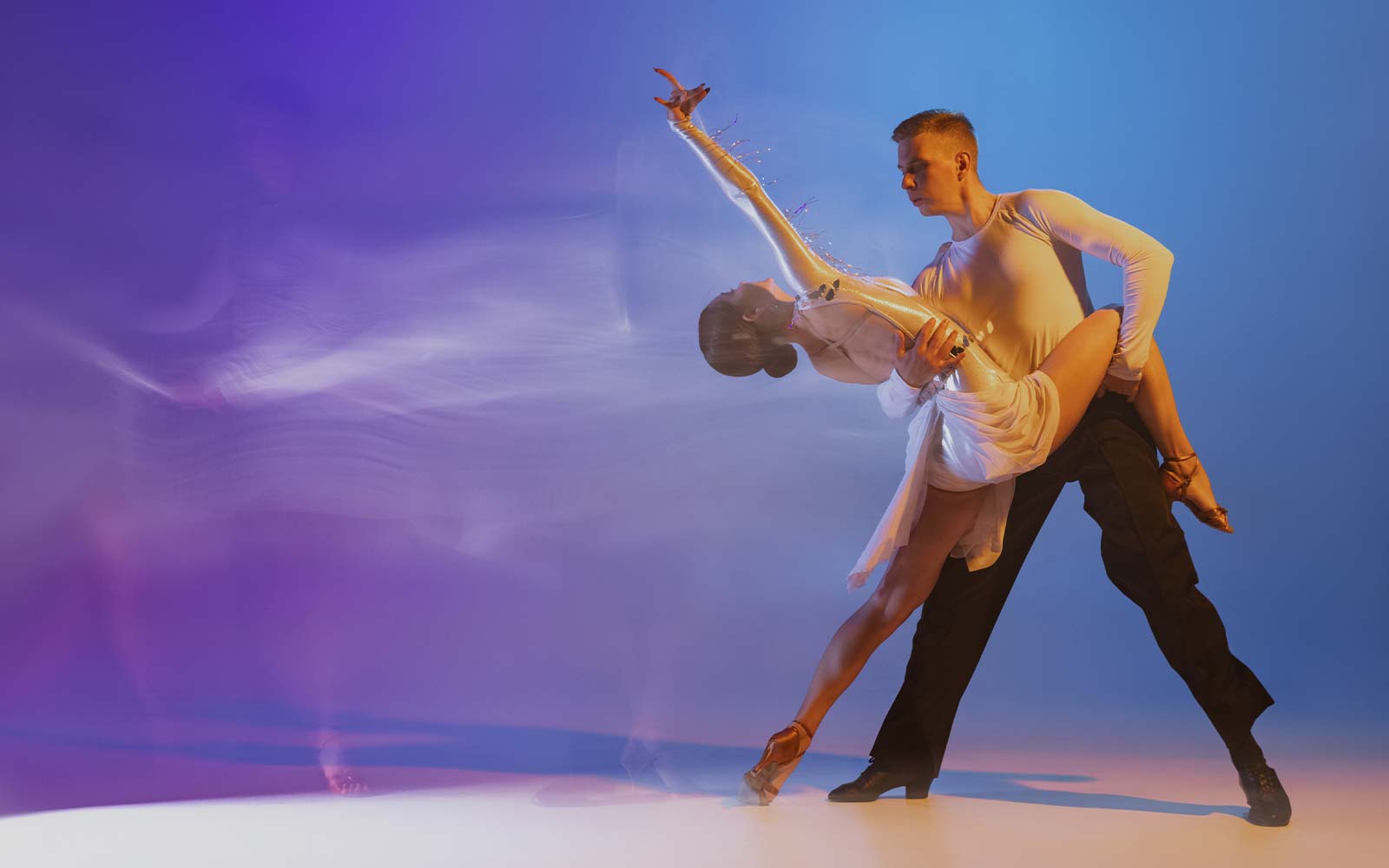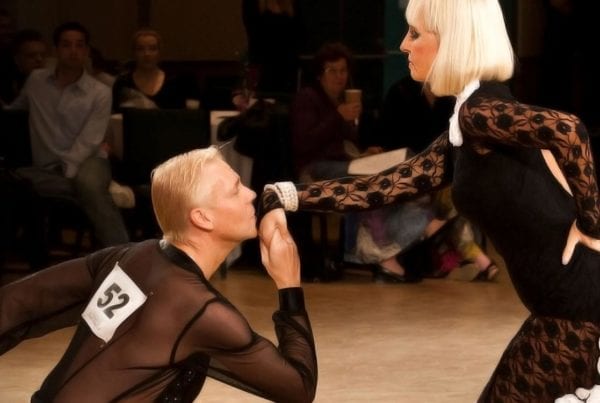When people first learn to dance, they are focused entirely on what their feet are doing: which foot to use, where to put it, and when. But as they get more experienced, they learn that there’s a need to lead and follow step patterns.
Leading and following are equally challenging, and the main reason why ballroom dancing is more difficult to master than most other forms of dance. In order for a couple to move seamlessly together, they need to coordinate their movements so that everything happens at the right time, making things look effortless. Learning technique is important, but lead and follow are vital to create that look you admire so much when you watch great dancing.
There are essentially four types of lead. The Latin dances, as well as American Smooth and Rhythm, rely on all four. The Ballroom dances, in which the couple remains in closed hold throughout the dance, only uses three of the four leads. We’ll explore each of them in more detail.
1. Weight Change
Perhaps the easiest of the lead types is the weight change. It can be as simple as moving from one foot to the other, like what you see when a couple gets ready to start moving. To do a good job of this, the leader needs to have a strong frame, though never too stiff as that makes things harder to follow. A lead with a weak frame puts the lady in the position of trying to match a wet spaghetti noodle, making her effort much more difficult. As you move your body, the lady feels the energy of the movement and the direction, making it possible to match both. You can practice this by taking closed hold and having the lady close her eyes. Place your feet shoulder width apart, then transfer your weight from one foot to the other. Check if the lady can match you. If she can’t you either don’t have enough “grounding,” or pressure into the floor, or your frame isn’t sufficiently strong. Now try taking an actual step to each side. Next, try moving forward and back. These should be easier. Also try doing Cha Cha chasses to the side and see if she can feel that it’s an actual Chasse rather than just a single step to the side. Many leads are not clear enough in creating the closing and pushing off action during the Chasse, making it hard for the lady to feel that it’s a Chasse.
2. Physical
A physical lead is different from a weight change because it doesn’t require a weight change. It involves the man increasing pressure through the hand on the lady’s shoulder blade to direct her energy in a new direction. This pressure should never come from the arms, though. It should come from the man’s back, utilizing the lats and the side of the body.
There are many figures where physical lead is used. In the Waltz, think of the Wing or the Weave from Promenade. Even the basic Whisk utilizes a physical lead at the end of step 1 to assist the lady in swiveling her right foot so that she can step back instead of just to the side. This lead is used often through the American Smooth dances as the connecting hand sweeps through the rotation to guide the lady toward the new alignment. And, of course, it is used in a great many Latin figures. The Closed Hip Twist is a great example, as are the Throwaway or American Spin in Jive.
3. Shaping
The shaping lead starts to involve more dance experience, because it is easily misunderstood and often used incorrectly. In this lead, the man stretches the side of his body, or his arms, to create a change in shape. A simple example is the lady’s underarm turn in any dance. By raising his arm, the lady knows that she has to go under it. If he raises the arm across his face, he guides her to turn left, as compared to raising it straight up on his left side which guides her to turn right. For some figures, such as the Spiral in Cha Cha, the timing of the lead is vital. Even a little too late makes it impossible for the lady to complete her action in time to the music.
Besides the lifting of the arm, this lead involves any figure where sway is used. Here you need to be careful to understand the use of sway and how to control it. Often, beginner dancers see sway used by high-level couples and try to create sway even though they are barely moving. This looks awkward and unappealing. Sway is directly connected to the amount of energy and the application of pendulum swing. There is also a type of cosmetic sway used in some high-level figures such as the Oversway.
This type of lead is applied in Paso Doble to create dramatic visual styling, even on very simple figures, and can be a great way for those still fairly new to dancing to develop their understanding of how to use shaping in dancing. Never collapse one side. Instead, lift the other side.
Where this lead starts to get complex is how it is used for more advanced movement such the lady’s head turn during the sway in the Running Finish or the Three Step. As the man stretches the right side of his body upwards, the lady instinctively feels a desire to turn her head to the right as her shoulder starts to rise on the left. At high skill levels, the lady’s head turn in such figures can be quite beautiful, but done poorly it looks out of control and overly busy. As a result, use of the shaping lead for head rotations should only be attempted by highly experienced dancers.
4. Visual
The visual lead is very challenging, and for that reason it’s generally only used for the most advanced figures. It happens when neither partner is in direct contact with each other. The lady must carefully watch the man’s movements to follow them. It may be to match each other, as in side-by-side actions in Cha Cha, or to create an opposite action, as in the Cha Cha There and Back. It’s also possible for the lady to delay her actions, waiting for the man to complete an action such as a spin, before she continues on.
You can practice this lead by standing apart from each other with the man initiating various types of movement, having the lady try to follow them. It takes a fair amount of skill and practice to master.














